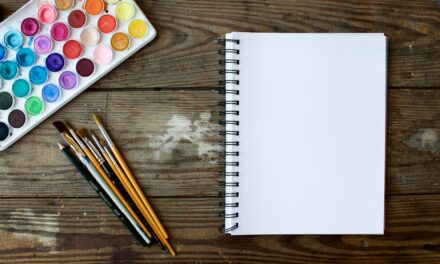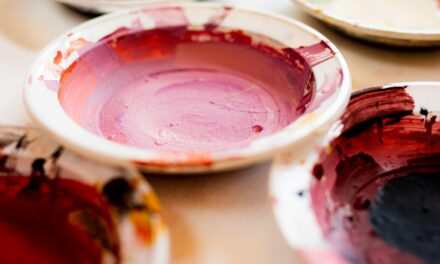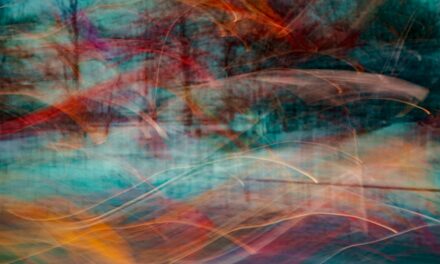Traditional sketching is a time-honoured practice that has been the foundation of artistic expression for centuries. It is an intimate process, often characterised by the tactile sensation of pencil on paper, the subtle nuances of line work, and the immediacy of capturing fleeting ideas. Artists have long relied on sketching as a means to explore concepts, develop compositions, and refine their techniques.
The simplicity of traditional materials—be it graphite, charcoal, or ink—allows for a direct connection between the artist’s hand and the medium, fostering a sense of spontaneity and creativity that is often difficult to replicate in digital formats. Moreover, traditional sketching serves as a vital tool for observation and study. Artists engage with their surroundings, translating the world around them into visual language through careful observation and interpretation.
This practice not only hones their skills but also deepens their understanding of form, light, and texture. The imperfections inherent in traditional sketches often add character and depth, inviting viewers to appreciate the artist’s journey rather than merely the final product. In this way, traditional sketching remains an essential aspect of artistic development, providing a solid foundation upon which more complex works can be built.
Summary
- Traditional sketching involves using pencil, pen, or charcoal on paper to create art
- Digital enhancements refer to using software and technology to improve and modify traditional sketches
- Combining traditional and digital techniques allows for greater creativity and flexibility in art
- Tools for combining traditional and digital art include scanners, graphic tablets, and digital drawing software
- Enhancing traditional sketches digitally can involve adding colour, texture, and special effects to the original sketch
Introduction to Digital Enhancements
Digital Tools and Workflow
With software such as Adobe Photoshop and Procreate, artists can manipulate their sketches with ease, adjusting colours, layering textures, and applying effects that would be challenging to achieve with traditional media alone. Digital enhancements also facilitate a more efficient workflow. Artists can save time by making quick adjustments or duplicating elements without the need for extensive reworking.
Collaboration and Sharing
This efficiency can be particularly beneficial in professional settings where deadlines are tight and revisions are frequent. Furthermore, digital platforms provide opportunities for collaboration and sharing, enabling artists to connect with a global audience and receive feedback in real-time.
The Future of Artistic Expression
As such, digital enhancements have become an integral part of contemporary art practice, allowing artists to push the boundaries of their creativity while maintaining the essence of their traditional roots.
Benefits of Combining Traditional and Digital Techniques
The fusion of traditional and digital techniques offers a myriad of benefits that can elevate an artist’s work to new heights. One of the most significant advantages is the ability to retain the authenticity and warmth of traditional sketches while harnessing the precision and versatility of digital tools. This combination allows artists to create pieces that are rich in texture and detail, blending the organic qualities of hand-drawn elements with the clean lines and vibrant colours achievable through digital means.
Artists can explore various styles and techniques without the fear of making irreversible mistakes. For instance, a traditional sketch can be scanned into a digital format where it can be manipulated, layered, or enhanced with colour.
This process not only opens up new creative possibilities but also allows artists to develop a unique visual language that reflects their individual style. By embracing both traditional and digital methods, artists can create works that resonate on multiple levels, appealing to diverse audiences while showcasing their technical prowess.
Tools and Techniques for Combining Traditional and Digital Art
To successfully combine traditional and digital art techniques, artists must equip themselves with the right tools and knowledge. The first step is selecting appropriate traditional materials that lend themselves well to digital enhancement. High-quality sketch paper, pencils, inks, and markers are essential for creating initial sketches that will later be digitised.
Artists should also consider using mixed media techniques, incorporating watercolours or pastels into their sketches to add depth before scanning them into a digital format. Once the traditional artwork is digitised—typically through scanning or high-resolution photography—artists can utilise various software programs to enhance their pieces further. Adobe Photoshop remains a popular choice due to its extensive range of tools for editing and manipulating images.
Procreate has also gained traction among artists for its user-friendly interface and robust features tailored for tablet use. Techniques such as layering allow artists to build upon their sketches digitally, while brushes can replicate traditional media effects like watercolour washes or textured pencil strokes. By mastering these tools and techniques, artists can create seamless blends of traditional and digital art that showcase their creativity and skill.
Tips for Enhancing Traditional Sketches Digitally
When enhancing traditional sketches digitally, there are several tips that artists can follow to ensure a successful outcome. First and foremost, it is crucial to maintain the integrity of the original artwork during the digitisation process. Scanning at a high resolution will capture fine details and textures that may be lost at lower settings.
Additionally, using a flatbed scanner rather than a camera will help avoid distortions that can occur with uneven lighting or angles. Once the artwork is digitised, artists should take advantage of layers in their chosen software. By working on separate layers for different elements—such as colour, shading, or background—artists can make adjustments without affecting the original sketch.
This flexibility allows for experimentation with colour palettes or effects without the risk of damaging the initial drawing. Furthermore, utilising blending modes can create interesting interactions between layers, enhancing depth and dimension in the final piece.
Examples of Successful Traditional and Digital Art Combinations
Numerous contemporary artists have successfully embraced the combination of traditional and digital techniques in their work, showcasing the potential of this hybrid approach. One notable example is the artist James Jean, whose intricate illustrations often begin as hand-drawn sketches before being transformed into vibrant digital compositions. Jean’s ability to merge organic line work with bold colours and textures exemplifies how traditional methods can inform and enhance digital art.
Another inspiring case is that of Lisa Congdon, who frequently combines her hand-drawn illustrations with digital elements to create striking visual narratives. Congdon’s work highlights how traditional sketches can serve as a foundation for more complex designs when enhanced digitally. By layering patterns or adding graphic elements digitally, she creates dynamic compositions that resonate with viewers on multiple levels.
These examples illustrate not only the versatility of combining traditional and digital techniques but also how such practices can lead to innovative artistic expressions.
Exploring Creative Possibilities with Traditional and Digital Art
The exploration of creative possibilities through the combination of traditional and digital art is limited only by an artist’s imagination. This hybrid approach encourages artists to push boundaries and experiment with new ideas that may not have been feasible within a single medium. For instance, an artist might begin with a traditional sketch but then incorporate photographic elements or 3D models into their composition digitally, creating a unique juxtaposition that challenges conventional notions of art.
Moreover, this fusion allows for greater accessibility in art creation. Artists who may feel intimidated by digital tools can start with familiar traditional methods before gradually integrating technology into their practice. Conversely, those who primarily work digitally can draw inspiration from traditional techniques to enrich their work.
This cross-pollination fosters a dynamic artistic community where ideas flow freely between mediums, encouraging collaboration and innovation.
Embracing the Best of Both Worlds
In conclusion, the combination of traditional sketching and digital enhancements represents a powerful evolution in artistic practice. By embracing both worlds, artists can harness the strengths of each medium to create works that are not only visually stunning but also deeply personal.
As artists continue to explore this hybrid approach, they will undoubtedly uncover new creative possibilities that challenge existing paradigms within the art world. The journey towards mastering both traditional and digital techniques may require time and dedication; however, the rewards are immense—allowing artists to express their unique visions in ways that resonate with contemporary audiences while honouring the rich history of artistic expression. Ultimately, by embracing both traditional and digital art forms, artists can create a vibrant tapestry that reflects the complexities of modern life while celebrating the timeless nature of creativity itself.
Combining traditional sketches with digital enhancements is a fascinating way to blend the old with the new in the world of art. This technique allows artists to create unique and innovative pieces that showcase their creativity and technical skills. For those interested in exploring different art techniques, an interesting read would be An Introduction to the Art Technique: Wire Sculpture. This article delves into the intricate process of creating sculptures using wire, offering insights into the artistic explorations that can be achieved through this medium. It is a great resource for artists looking to expand their repertoire and experiment with new forms of expression.



